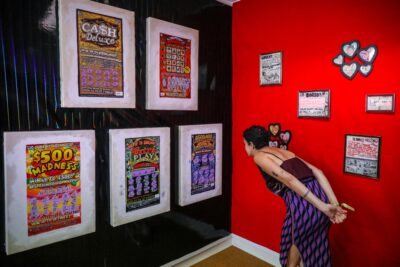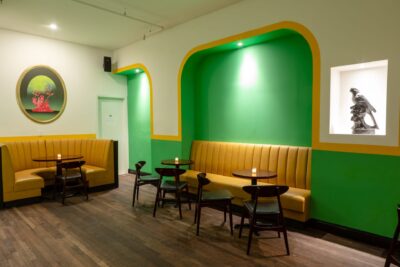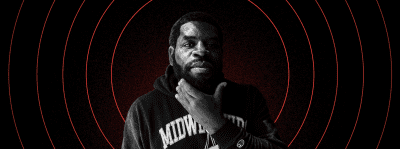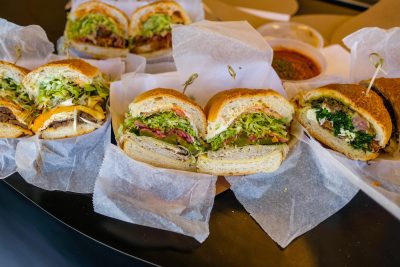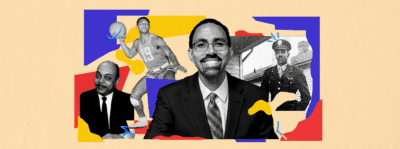Courtesy Brooklyn Museum
Brooklyn Museum’s ‘Africa Fashion’ celebrates the continent through designers
Packed with history, music, never-before-seen textiles and legendary designs, the new exhibit informs and thrills
Africa’s powerful saga of liberation and post-colonial self-determination plays out vividly in “Africa Fashion,” a new Brooklyn Museum exhibition, across 180 textiles, accessories, outfits, and more, all by dozens of creatives from 20 countries across the continent — and the diaspora beyond.
“The exhibition illuminates how fashion alongside visual arts and music played a pivotal role in Africa’s cultural renaissance during the independence years, and how these elements lay the foundation for the radical transformation of global fashion,” Ernestine White-Mifetu, Brooklyn Museum’s Curator of African Art, told press before the June 23 opening, noting “the museum resides in one of the most dynamic African American communities in the country.”
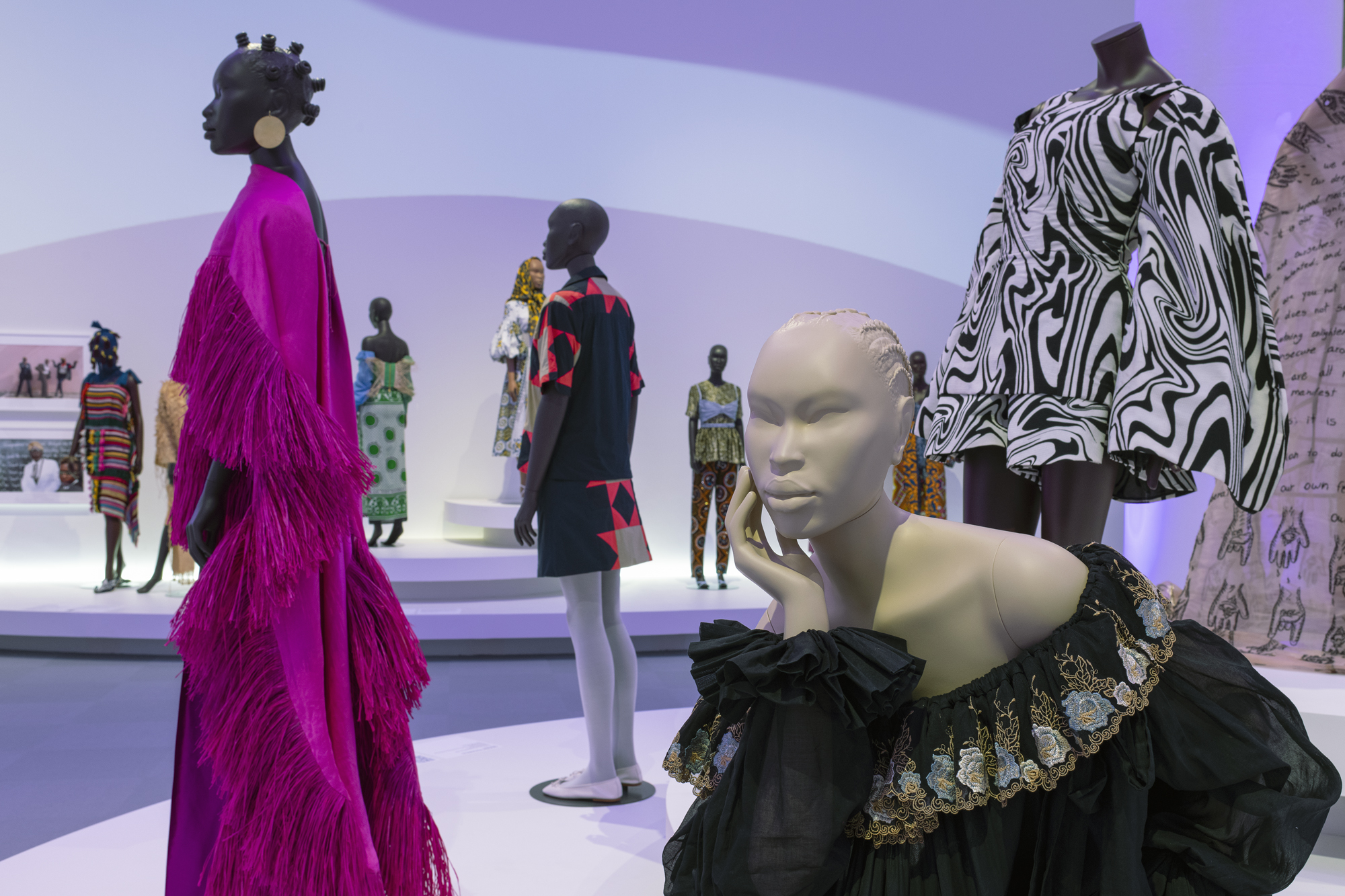
Courtesy Brooklyn Museum
The museum adapted the spectacle from the Victoria and Albert Museum in London. On the heels of Pharrell’s inaugural collection as Louis Vuitton men’s director last week, its North American arrival marks the largest exploration into Black design to ever hit this continent.
Multimedia material like footage from national declarations of independence and pan-African soundtracks across the decades supplement “Africa Fashion” and the show’s seven thematic, chronological sections. At the end, guests can even take a piece of its irresistible spirit home courtesy of a never-before-staged luxury lifestyle concept shop envisioned by the buzzy curators at Lagos-based Alára. Works from designers throughout the show are on sale, as are candles, coloring books and numerous other visual delicacies.
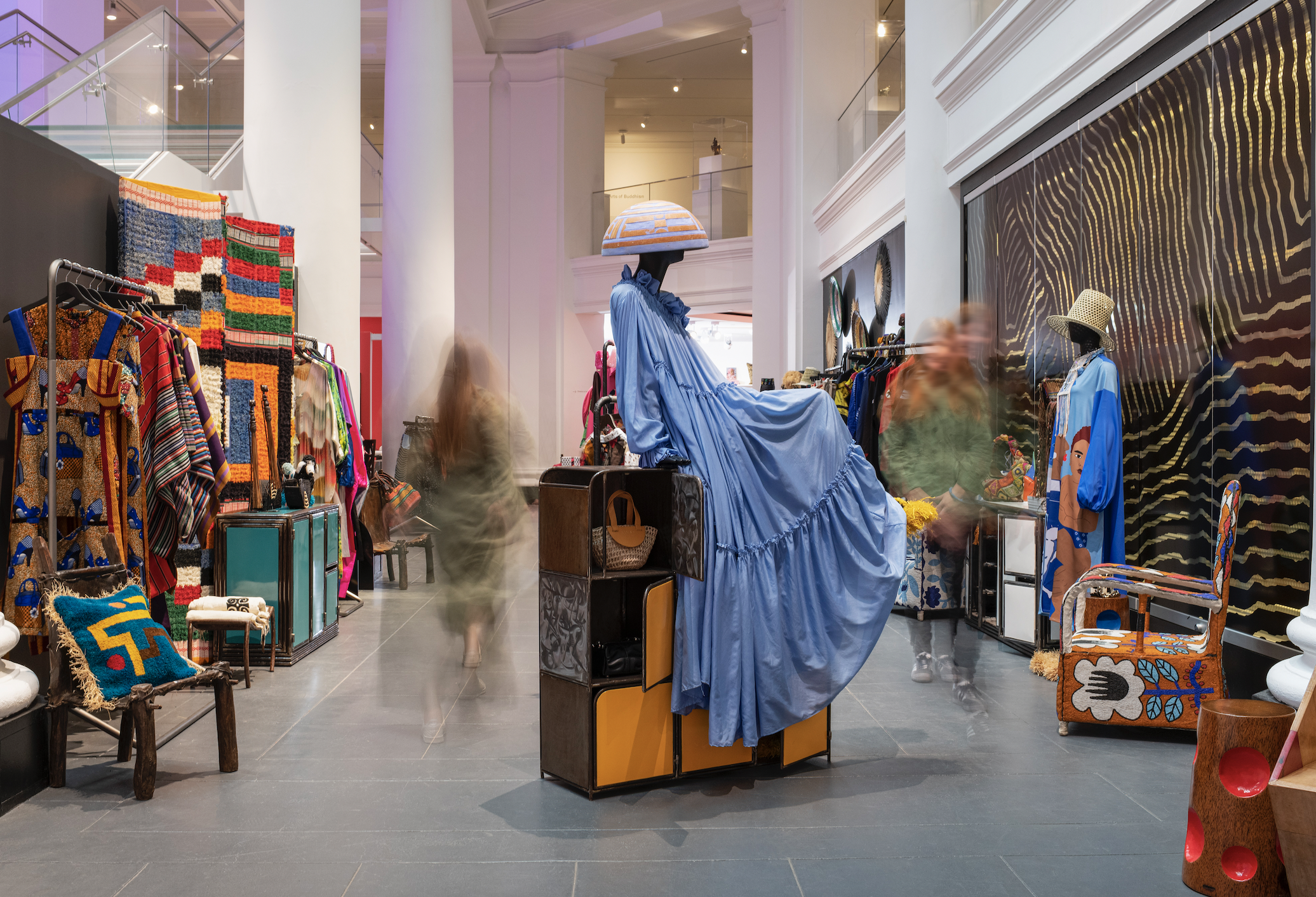

Installation view, ALÁRA at the Brooklyn Museum (Photo: Roshard Hercules)
But before the catwalks and jaw-dropping details, “Africa Fashion” lays down some history. The show begins with a timeline of the continent’s liberation, starting with the declaration that created Liberia on July 26, 1847, and moving through the tumultuous 1960s. Some entries have photos, others videos on mounted screens. Across the way, an alcove displays books, records, footage at the intersection of art and politics. Photography and the exhibition’s first outfits conjure the defiance and genius of icons Fela Kuti and Miriam Makeba.
Building on the historical context offered by the exhibition’s introduction, “Cultural Renaissance,” the exhibition’s next section, “Politics and Poetics of Cloth,” evidences how textiles like ankara and àdìrę have also depicted current events, concluding with a 22-minute, two-channel film by Godfried Donkor where his mother explains many Ghanaian fabric names.
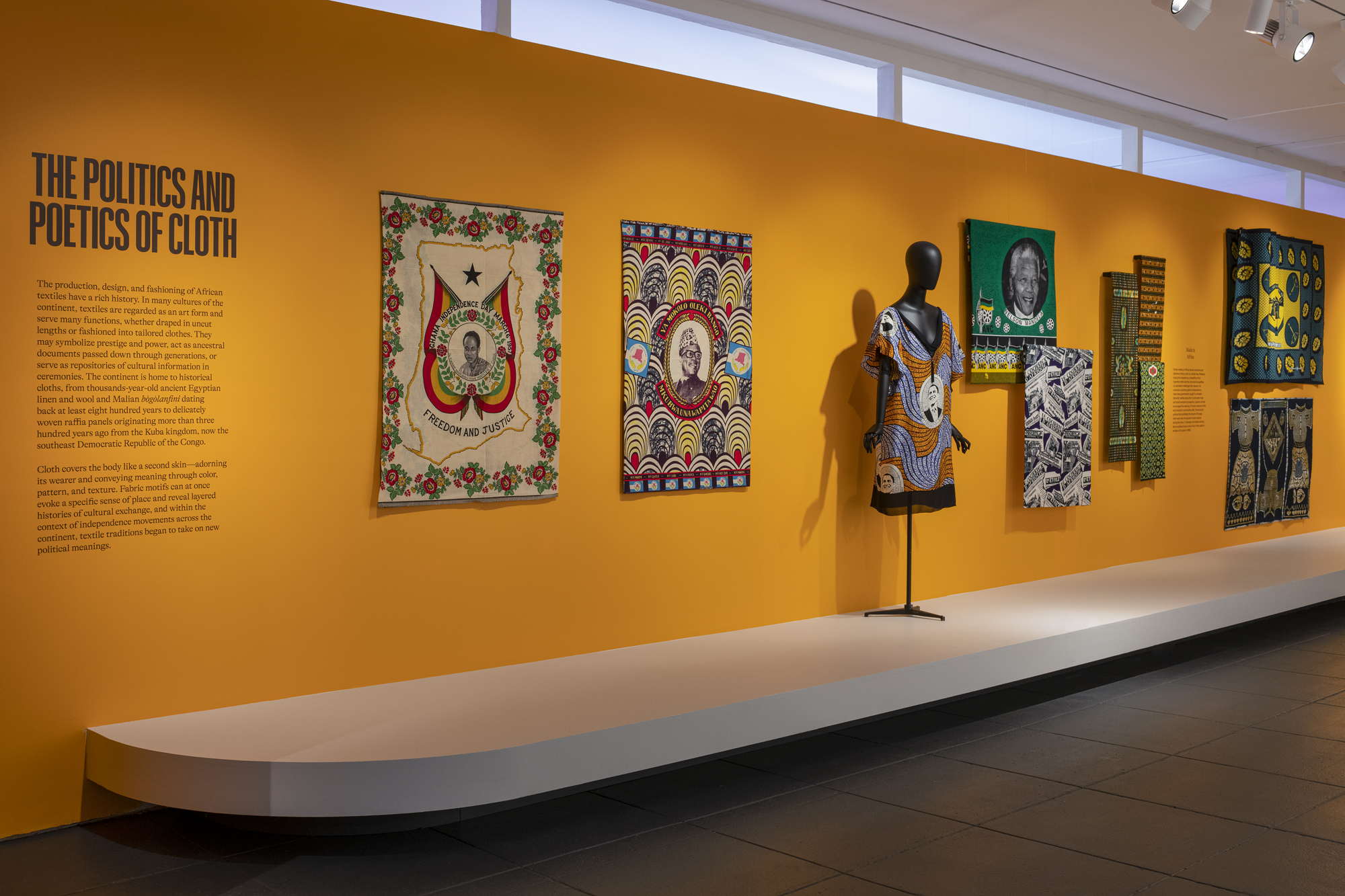

Talking textiles (Courtesy Brooklyn Museum)
Primed, you’ll then meet Africa’s fashion vanguard of the past century, whose sartorial masterpieces run elegant, like a velvet cloak Moroccan designer Naïma Bennis dreamt up for sophisticates of the 1970s, and sensual, such as a bejeweled ensemble by legendary Nigerian designer Shade Thomas-Fahm. Accompanying wall text recounts that educator and activist Lalage Bown bought this gown and hat set, sewn in 1977, to wear as she received the prestigious honor of office of the Order of the British Empire at Buckingham Palace.
More than half of “Africa Fashion” is about the present — through which we can also feel the future. Innovation abounds. After the “Vanguard” section concludes with a three-minute montage of global fashion week clips from 2017 through 2021, “Cutting Edge” focuses on jewelry with an “Adornment” interlude that highlights contemporary creations, like Lafalaise Dion’s 2019 “Amazon” headdress, bodice, and skirt entirely of cowrie shells. It is juxtaposed, inches away, by a collection of metal alloy bracelets fashioned by unknown Nigerian, Ethiopian and Ghanian artisans in the 19th and 20th centuries, all from the Museum’s holdings. Photographs from the institution’s archives also appear throughout — grounding the current in the historic in order to illustrate that Africa’s thriving imagination at this moment has many intentional, age-old origins.
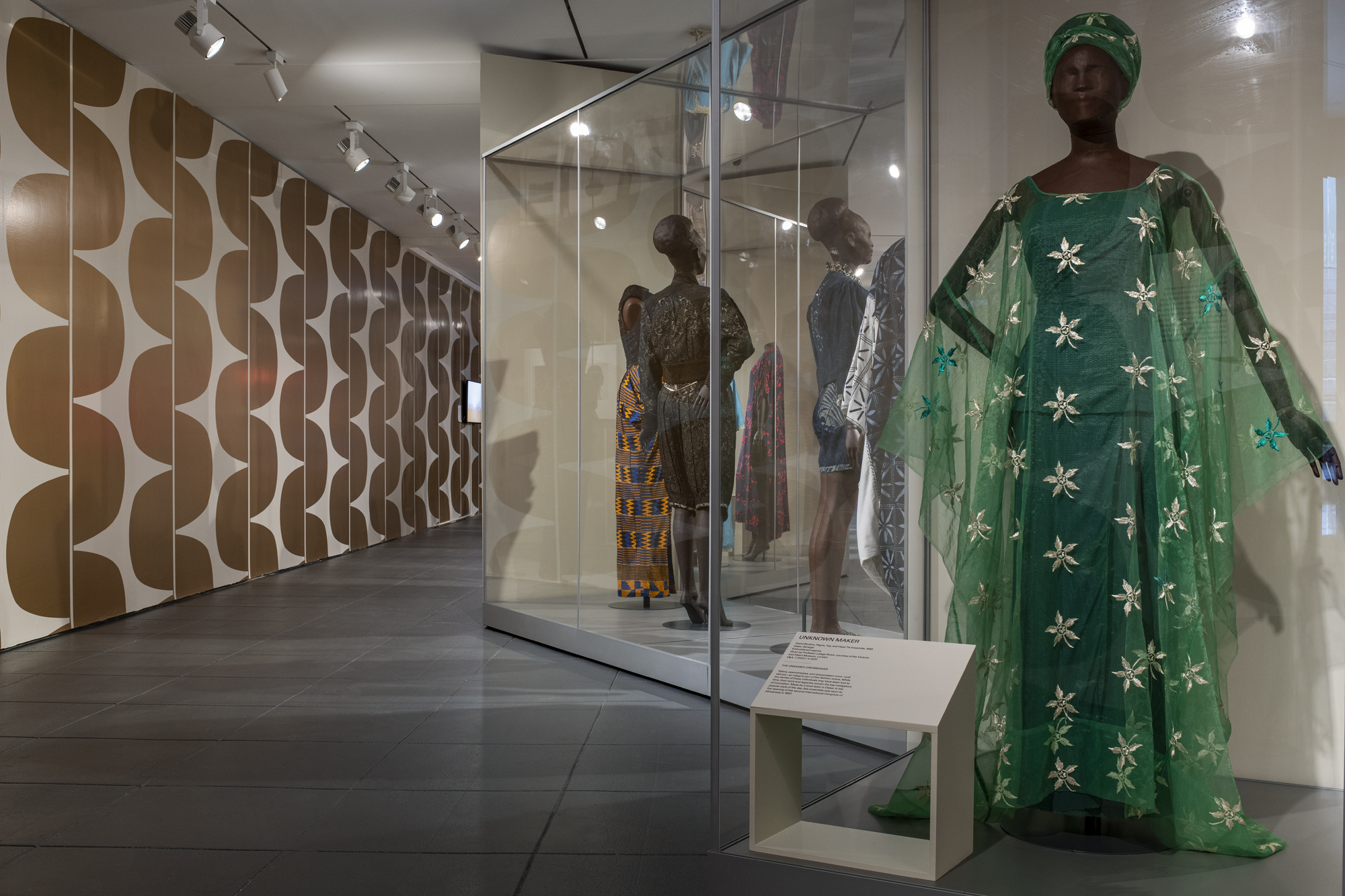

Courtesy Brooklyn Museum
Standout loans in “Africa Fashion,” though, aren’t just from fashion designers. The entrance to a rare Hassan Hajjaj installation, a room outfitted with a video and sound bath (and cushioned seats of frenetically patterned upholstery), is nestled into “Cutting Edge” behind a work from his “My Rockstars” portrait series, presented at Yossi Milo in Chelsea last year. Viewers might not realize how strong a role sound plays in “Africa Fashion” unless they notice themselves dancing to its curated playlists, like I did. Annissa Malvoisin, the Museum’s Postdoctoral Fellow in the Arts of Africa from Bardt, said she coordinated each section’s soundscape according to its era.
“We also included music from North Africa,” Malvoisin told Brooklyn Magazine at last week’s press preview. “We didn’t want the exhibition to be too heavily West Africa and South African.”
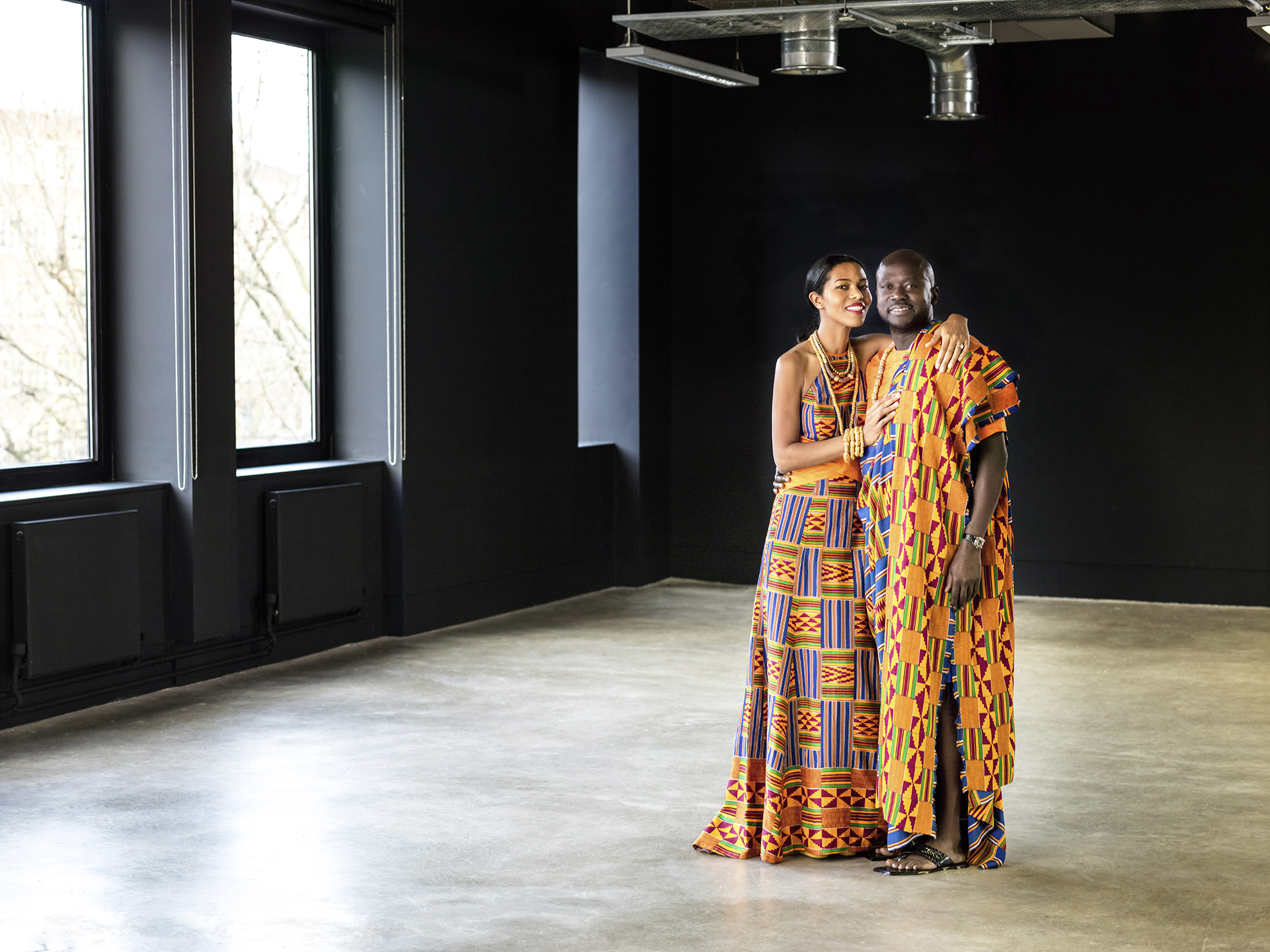

Ensembles for the wedding of Ashley Shaw-Scott Adjaye and David Adjaye. Ghana, 2014. (Designed by Kofi Ansah, Photographed in London in 2014 by Robert Fairer)
“The center space is just about a party,” she added. Just before,“Through the Photographer’s Lens” follows “Capturing Change.” Both make for a bumping pregame, with photos of style across Africa and beyond from the past decade, shaped by while also shaping the digital age.
At last, the two-century survey opens onto a lavender-lit space with palatial ceilings and the hottest looks of Black design’s past few years, situated on elevated white platforms of sweeping curves and circles animating the many decked-out mannequins with the optical illusion they’re dancing alongside attendees, too. Favorites are impossible to pick here, but a 2021 frozen ballistic nylon suit and top hat by Nigerian fashion house Tokyo James stands out for the bold but tasteful cutouts in the masculine outfit’s jacket. An extravagant organza dress, face mask and billowing cape, all embroidered with hands with eyes by Moroccan designer Artsi Ifrah, stands sentry at center.
New York-based talent Papa Oppong contributes two looks from his 2021 Yopoo Collection, narrating seasons in the life of a Ghanaian woman, including birth, puberty, marriage, witchcraft and death. Brooklyn Museum chose to showcase Oppong’s hand-woven kente “Botomu Dress” and the “Side Hustle Concept Bag” accentuating the garment’s exaggerated hips, symbolizing both the fertility and financial commitment at the heart of “Marriage,” for which the look’s named.
“Birth,” Oppong told Brooklyn Magazine, was the biggest challenge of them all to craft — 20 pounds of stiff ruffled kente cloth somehow suspends effortlessly from an airy t-shirt, lining a slit up the side so the outfit beneath can still show through. The longer you look, the more layers of symbolism emerge. Imagine the power of actually getting to wear any one piece in this room.
“When I thought of being a museum,” Oppong said, “I always thought it will be either after I pass or when I’m in a wheelchair and I’m 89 — to get this opportunity now tells me a couple of things. It tells me that times are changing. It doesn’t matter how old or young you are, your work can still be relevant to inform, educate, inspire.”
“Words fail me,” he said. “This is one of the greatest things in my life.”
“Africa Fashion” will be on display at Brooklyn Museum now through October 22.
You might also like 

















